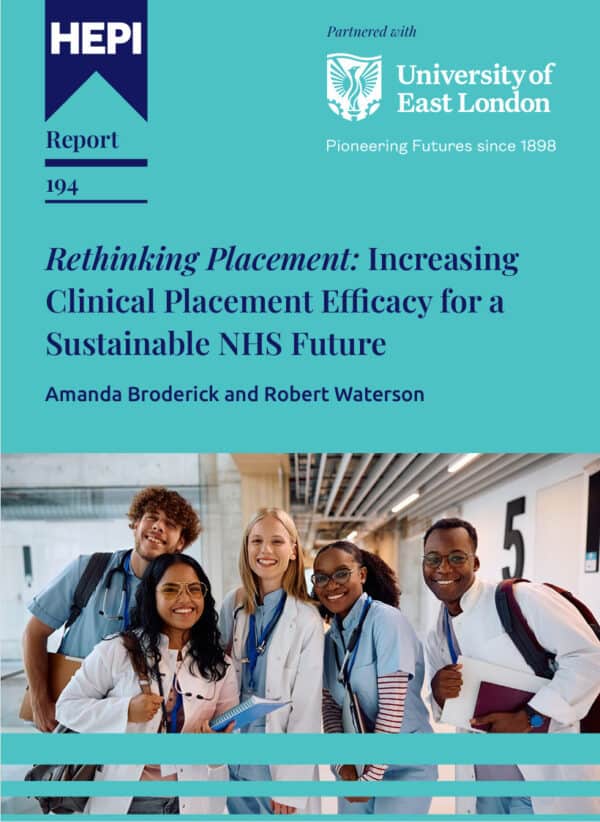Our mission – if we choose to accept it…
This blog was kindly authored by Andy Westwood, Professor of Public Policy, Government and Business at the University of Manchester. It is the sixth blog in HEPI’s series responding to the post-16 education and skills white paper. You can find the other blog’s in the series here, here, here, here and here.
Now we’ve had time to consider the post-16 white paper, we can think seriously about implementation and what’s needed to deliver its vision. Both in the governmental architecture that will oversee and drive it, and in the universities and colleges charged with its delivery. We know the overall vision is broad – the Departments for Education; Science, Innovation & Technology; and Work & Pensions have signed the strategy, but Business, the Treasury and the Home Office also retain interests in its success. As Philip Augar notes in the Financial Times, it’s right to prioritise such a ‘system-wide approach’. Labour will be hoping these proposals, alongside their industrial strategy, endure for the longer term and support both economic growth and improved living standards. But as Augar and Theresa May know, this cannot be guaranteed.
Overall, it’s a radical shift from the last decade in three specific ways – first bringing them all together into a coherent whole; second for a single system to be more planned and coordinated than market driven; and third, to intervene, shape and direct both institutions and provision within it.
Trailed in the PM’s conference speech in Liverpool, the white paper offers an expansive tertiary vision – with both R&D and welfare alongside teaching and learning. But ‘tertiary’ isn’t the term the Government prefers, and it doesn’t feature in the document nor in the speeches and statements that have launched it.
Nevertheless, the shift from markets and competition to specialisation, collaboration and direction is quite a departure from the reforms of 2010 and 2017. Not just scaling back competition between different institutions, but also the central assumption in the 2017 Higher Education and Research Act that new providers would be the ‘rising tide lifting all boats’ or that ‘market exit’ and institutional failure would be necessary parts. In place comes the Industrial Strategy and missions, deliberately driving the broader system, including both teaching and learning and research.
But how do we get from here to there? The white paper relies on a host of actors – colleges, universities, employers, individual learners – responding positively. It also requires dramatically improved coordination across government – not just across Whitehall but also between the agencies where much work will take place, including the Office for Students, UKRI, Mayoral Authorities and Skills England.
It is ambitious because this new vision is grafted onto existing infrastructure as well as to systems, incentives and behaviours. In particular, the OfS now has enhanced roles and powers, index-linked tuition fees, the access agenda, and the LLE. UKRI remains largely intact, but is also charged with directing more of its funding towards new government priorities. For all the complaints and problems, institutions have become used to these systems and cultures. For some, there may be enough to carry on as they are – managing risk and maximising income with current models, rather than adapting their existing strategies.
But the government wants to see change, setting priorities across both the economy and public services. There will be legislation – necessary to index fees but also to consolidate extra powers and levers across the whole post-16 system so that government can drive priorities more deeply and quickly. If specialisation and innovation aren’t happening quickly and skills aren’t being driven into the most important firms and sectors, then they can be ramped up. In neither economic nor political terms can the government afford to hang around.
But driving the system in particular directions requires a practical understanding of places, economies, firms and people that a more market-led system does not. This has to be created (or recreated), and the white paper relies on a mixture of recommendations – enhancing the powers and capacity of OfS and UKRI and also creating Skills England, the Industrial Strategy Council and the Labour Market Advisory Board.
As crucial to the reconfiguring of the broader architecture will be the priorities and institutional strategies of colleges and universities. Innovation, specialisation and growth cannot all be mandated from above. Successful industrial strategy and economic growth will also depend on strong institutions working strategically and creatively together with firms, sectors and in clusters. It will be these day-to-day relationships and actions that determine the ultimate success of the white paper’s vision.
This will be an important issue for existing colleges and universities, but also as new institutional forms emerge – ‘super’ or collaborating universities, new specialists and all when expected to come together in particular regions and places.
A lot depends on a reconfigured OfS, grafting these new powers onto existing remits and also building new capacity to drive change in FE, including at Levels 4 and 5 and through new Technical Excellence Colleges. Much will involve rediscovering the techniques and networks that HEFCE deployed. Often, this included sector expertise and the appointment of Derby Vice Chancellor Kathryn Mitchell to lead a review of ‘cold spots’ is a promising step.
It will be hard work and will involve building new capacity, incentives and insights, as well as rewiring governance, funding and regulation. But it will also require institutions to committo building new capacity and to develop strategies that can translate new objectives into practice. While many have planning and policy capacity, too much is tied up in compliance. So if we are building a system that, in the words of Michael Heseltine is ‘intervening before breakfast, lunch, tea and dinner’ – then we’d better make sure there is institutional appetite and capacity with which to do so.
The stakes are high. This isn’t just a new technical vision for delivering skills or knowledge to meet the needs of employers. Markets and competition have not helped us break out of the economic doom loop endured since the financial crisis. In turn, this has damaged the fabric of society as well as the life chances of too many people and places within it. Both colleges and universities will play a critical role in turning all of this around, but they will need the capacity and incentives to think and act differently. The white paper offers a new mission, but its success and longevity will depend on whether they decide they want to sign up.







Comments
Jonathan Alltimes says:
“What Adam Smith tells us and Joseph Schumpeter doesn’t.”
The sources of innovation are mostly outside of higher education.
Reply
Add comment